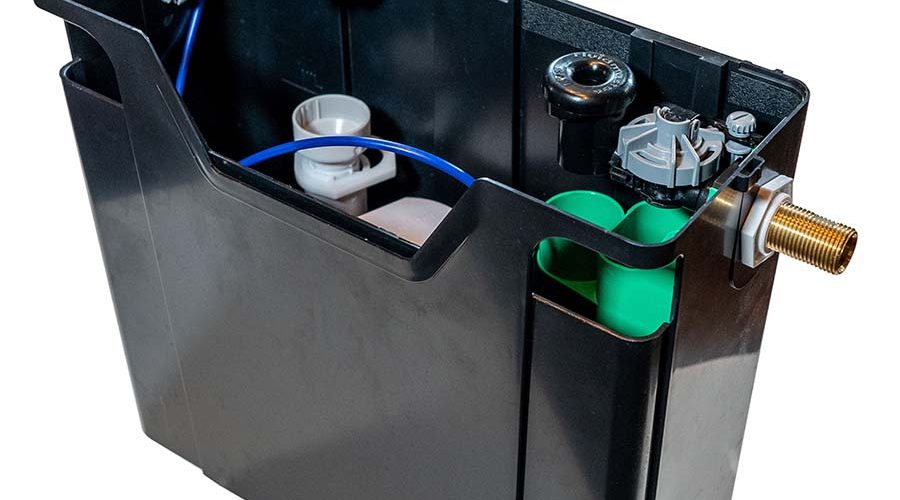Simple water conservation methods introduced through toilet flush and fill technology can create significant reductions in use of power. Adrian Hibbert, from leading UK toilet solutions and water management manufacturer Fluidmaster UK, explains why.
Fluidmaster
Water consumption per capita has risen exponentially in modern times, with UK residents now using over 142 litres of water per day each, according to the Energy Saving Trust. Toilets are the second biggest water user in the home and approximately 30% of total water used in a home is used to flush the toilet. This is the same high-quality drinking water which we use throughout the rest of the home.
Whilst these increases in water consumption are putting a strain on water resources and purses, there are small changes that can be made by developers, specifiers, facilities management companies, manufacturers and by homeowners themselves to considerably reduce water use with very little effort.
In a recent statement, Kevin Wellman, CEO at CIPHE, said: “Research highlights the need for promoting greater water efficiency. Installation of a water meter can not only reduce your water bill and save on energy, but it can also impact positively upon consumer behaviour that leads to more informed product choices.”
Yvonne Orgill, MD at The Unified Water Label, explained: “One in two consumers are asking about environmental considerations. We are making progress with consumer education, and previous research has shown that consumers are looking to make more environmentally-friendly decisions.”
To help consumers achieve these water reductions, one such quick and simple fix is to save water through toilet flushing and filling, using tailored plumbing technology. Installation of products like the Fluidmaster AirGap 6000 water-saving toilet cistern fill valve, which has been designed to offer substantial water savings with every single flush, will play a huge part in ‘covert water saving’.
By only commencing the filling process when the toilet cistern is empty, the AirGap 6000 can offer savings of 1 litre per flush with every single use of the loo. Considering that the average person flushes the toilet five times per day, and that the average UK household occupancy is 2.5 people; this equates to a potential reduction in water consumption by over 4500 litres per annum in an average UK household from the installation of just one water-saving AirGap.
On 8th July 2020, the Chancellor announced a £2bn Green Homes Grant scheme to upgrade homes across England. Under this, £500m of funding will be delivered through local authorities to improve the energy efficiency of low-income households. Local authorities can bid for funding under this scheme to improve the energy efficiency of low-income households in their area.
As Yvonne Orgill pointed out: “It is disappointing that water-efficient and energy-saving bathroom products, such as taps, showers and WCs, did not feature in the details of the Green Homes Grant, which could have encouraged many to upgrade their old bathroom fittings.
“As an industry, we have the technology to offer water-efficient products without compromising the experience for the end-user. Many manufacturers are also supporting the Unified Water Label, which identifies the water and energy consumption of products, helping consumers make more informed choices.”
Out in the field, I see the benefits reaped by environmentally-conscious specifiers who source products from progressive UK manufacturers, like Fluidmaster. Particularly where reliability and quality of the products on offer are all subject to appropriate compliance testing, certification and registration with applicable industry schemes.
At Fluidmaster, we feel it is vital to reinforce the benefits of the installation and maintenance of bathroom water-saving devices, taking into consideration that many new-build properties contain two or three toilets. In an effort to capitalise on the potentially huge savings to be made when it comes to toilet flush and fill, simple specification switches can make a big difference.









